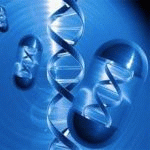Biotechnology
|
25 november 2014 02:18:49 |
| Subspace-based technique for speckle noise reduction in ultrasound images (BioMedical Engineering OnLine) |
|
Tweet Background and purposeUltrasound imaging is a very essential technique in medical diagnosis due to its being safe,economical and non-invasive nature. Despite its popularity, the US images, however, are corruptedwith speckle noise, which reduces US images qualities, hampering image interpretation andprocessing stage. Hence, there are many efforts made by researches to formulate various despecklingmethods for speckle reduction in US images.
Methods:
In this paper, a subspace-based speckle reduction technique in ultrasound images is proposed. Thefundamental principle of subspace-based despeckling technique is to convert multiplicative specklenoise into additive via logarithmic transformation, then to decompose the vector space of the noisyimage into signal and noise subspaces. Image enhancement is achieved by nulling the noise subspaceand estimating the clean image from the remaining signal subspace. Linear estimation of the cleanimage is derived by minimizing image distortion while maintaining the residual noise energy belowsome given threshold. The real US data for validation purposes were acquired under the IRB protocol(200210851-7) at the University of California Davis, which is also consistent with NIH requirements.
Results:
Experiments are carried out using a synthetically generated B-mode ultrasound image, a computergenerated cyst image and real ultrasound images. The performance of the proposed technique iscompared with Lee, homomorphic wavelet and squeeze box filter (SBF) in terms of noise variancereduction, mean preservation, texture preservation and ultrasound despeckling assessment index(USDSAI). The results indicate better noise reduction capability with the simulated images by theSDC than Lee, Wavelet and SBF in addition to less blurry effect. With the real case scenario, theSDC, Lee, Wavelet and SBF are tested with images obtained from raw radio frequency (RF) data.Results generated using real US data indicate that, in addition to good contrast enhancement, theautocorrelation results shows better preservation of image texture by SDC than Lee, Wavelet andSBF.
Conclusion:
In general, the performance of the SDC filter is better than Lee, Wavelet and SBF in terms of noisereduction, improvement in image contrast and preservation of the autocorrelation profiles.Furthermore, the filter required less computational time compared to Lee, Wavelet and SBF, whichindicates its suitability for real time application. |
| 95 viewsCategory: Biotechnology |
 Aerobic and sequential anaerobic fermentation to produce xylitol and ethanol using non-detoxified acid pretreated corncob (Biotechnology for Biofuels) Aerobic and sequential anaerobic fermentation to produce xylitol and ethanol using non-detoxified acid pretreated corncob (Biotechnology for Biofuels)sEMG feature evaluation for identification of elbow angle resolution in graded arm movement (BioMedical Engineering OnLine) 
|
| blog comments powered by Disqus |
MyJournals.org
The latest issues of all your favorite science journals on one page
The latest issues of all your favorite science journals on one page



